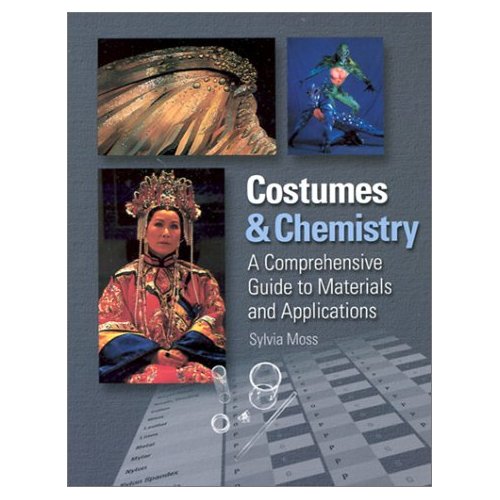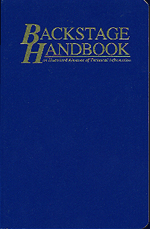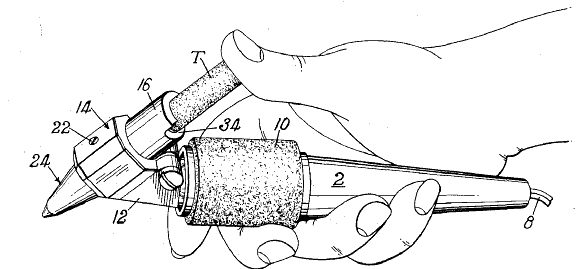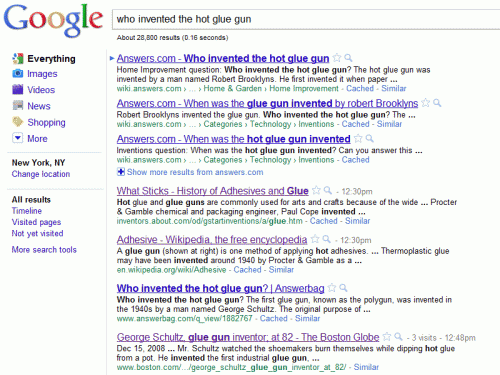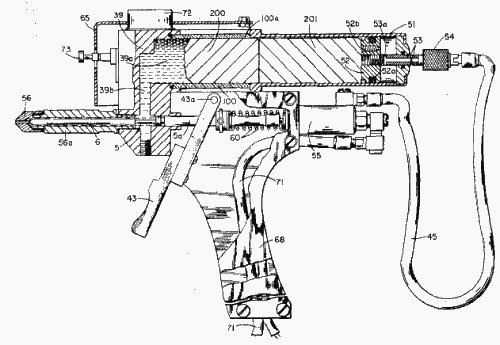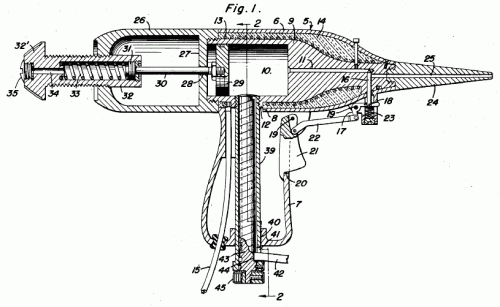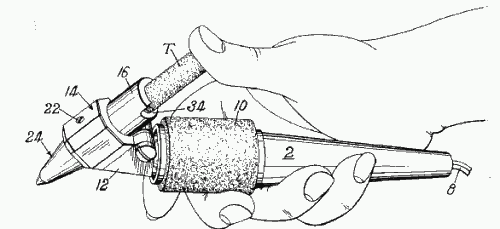I only recently came across this book for the first time. I’ve never noticed it before because of the title; if I had seen it before, I would have assumed it dealt only with costumes, not props, and I would have moved right along. Make no mistake though, this book is vital to the props maker. It actually contains almost nothing about making clothes or fitting actors or even that much about fabrics and sewing. Instead, Costumes & Chemistry: A Comprehensive Guide to Materials and Applications, by Silvia Moss, covers all sorts of paints, adhesives, and plastics (in both sheet and casting form) which the prop shop uses. Though the examples shown are mostly costume props and accessories and giant character heads and suits, you can very easily apply it to many of the props you need to build.
Costumes & Chemistry reveals a lot of research and development. It turns costume crafts and props into more of a science where the materials are thoroughly tested and described, rather than a hodge-podge of traditions and assumptions swirling around in each person’s head. Moss talked with chemists, technicians, salespeople and manufacturers of many of the materials you use from basically every company you’ve ever heard of who makes these materials. Armed with a number of grants from UCLA and interviews with so many people working in the field, she has created a reference book that should be on the shelf of anyone working in props and costume crafts, as well as those interested in cosplay and convention costumes, replica prop making, LARP, and even model making.
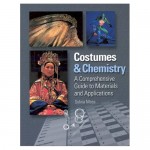
Part 1 of the book is brief, providing much of the same safety information found in Monona Rossol’s book. The bulk of the book is divided between parts 2 and 3, or materials and applications.
The section on materials divides them into categories such as paints, adhesives, plastic sheets, and thermoform plastics. For each type of material in these categories, Moss gives the brand names of the various products that she tested, examples of why and how they are used, a description of the physical properties, how to clean them up (where applicable), precautions and health and safety information, where to buy them, and what sizes and forms they come in. This isn’t where you will find information about making props from paper plates and pipe cleaners; this covers all the modern materials you’ve used or read about such as Sintra, latex foam, leather dye, Kydex, etc.
In the section on applications, Moss breaks down how many example costumes were made. These include costume accessories, headpieces and jewelry from Las Vegas revues, Broadway musicals, advertising characters in commercials, various mascots, and other venues. This section provides some illustrations giving general techniques, but for the most part, it discusses the applications of various materials through very specific examples from a wide variety of craftspeople. Some of the pieces chosen for the book are quite recognizable, and it can be interesting and surprising once you find out what materials and techniques were used to create their look.
Costumes & Chemistry was published in 2004, so it should remain up to date for awhile. I could see an update in a few years to include new formulations of current materials and new brands (as well as the deletion of defunct brands; Phlex-Glu, for example, is listed in the book but no longer produced). For the most part though, most of these materials have been in use for several decades now, and barring some dramatic new invention, should remain in use for several decades more.

